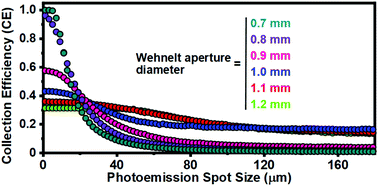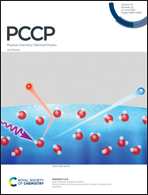Single-photoelectron collection efficiency in 4D ultrafast electron microscopy
Abstract
In femtosecond (fs) 4D ultrafast electron microscopy (UEM), a tradeoff is made between photoelectrons per packet and time resolution. One consequence of this can be longer-than-desirable acquisition times for low-density packets, and particularly for low repetition rates when complete photothermal dissipation is required. Thus, gaining an understanding of photoelectron trajectories in the gun region is important for identifying factors that limit collection efficiency (CE; fraction of photoelectrons that enter the illumination system). Here, we continue our work on the systematic study of photoelectron trajectories in the gun region of a Thermo Fisher/FEI Tecnai Femto UEM, focusing specifically on CE in the single-electron regime. Using General Particle Tracer, calculated field maps, and the exact architecture of the Tecnai Femto UEM, we simulated the effects of fs laser parameters and key gun elements on CE. The results indicate CE strongly depends upon the laser spot size on the source, the (unbiased) Wehnelt aperture diameter, and the incident photon energy. The CE dispersion with laser spot size is found to be strongly dependent on aperture diameter, being nearly dispersionless for the largest apertures. A gun crossover is also observed, with the beam-waist position being dependent on the aperture diameter, further illustrating that the Wehnelt aperture acts as a simple, fixed electrostatic lens in UEM mode. This work provides further insights into the operational aspects of fs 4D UEM.



 Please wait while we load your content...
Please wait while we load your content...